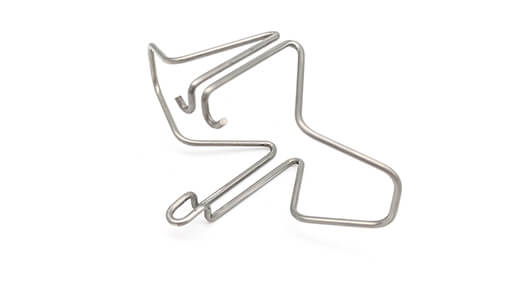Get unique, complex parts easily. No matter your requirements, Chaoyi Spring creates hard-to-produce coil springs and wire forms.
Let us help you create the custom wire form you need, from S-hooks and J-hooks to utility hooks and more.
We work closely with customers across a wide range of industries, helping them design and manufacture made-to-order parts.
Why choose Chaoyi Spring? We prioritize customer-focused collaboration, modern equipment and the latest technology to make your parts per print.
Find the information and guidance you need, from measuring a spring to learning about materials, placing an order and much more.
The Arab Spring, a series of protests and uprisings that swept across the Middle East and North Africa in 2010-2011, was a watershed moment in history. It demonstrated the power


The Arab Spring, a series of protests and uprisings that swept across the Middle East and North Africa in 2010-2011, was a watershed moment in history. It demonstrated the power of digital media to connect people, mobilize movements, and challenge authoritarian regimes. This essay argues that the Arab Spring was not simply a result of social media; rather, it was the culmination of a 'fourth wave' of digital media, characterized by its global reach, participatory nature, and ability to bypass traditional gatekeepers. This fourth wave, which includes platforms like Facebook, Twitter, and YouTube, played a crucial role in amplifying the voices of protesters, disseminating information, and organizing demonstrations.

The Arab Spring wasn't the first time technology played a role in social movements. Earlier waves of digital media, such as the rise of the internet in the 1990s and the spread of mobile phones in the early 2000s, had already begun to empower individuals and challenge traditional power structures. However, the 'fourth wave', characterized by social media platforms like Facebook, Twitter, and YouTube, marked a significant shift. This wave brought about a global network of interconnected individuals, enabling them to share information, coordinate actions, and connect with like-minded people across borders.
What made this wave truly revolutionary was its participatory nature. Unlike earlier technologies, which often required technical expertise, social media platforms were user-friendly and accessible to everyone. This democratized access to information and allowed individuals to become active participants in creating and sharing content. In the context of the Arab Spring, this meant protesters could bypass government censorship, share videos of demonstrations, and spread news of human rights abuses to the world.
The Arab Spring provided a stark example of the fourth wave's potential. Social media platforms played a critical role in mobilizing protesters, organizing demonstrations, and disseminating information about government corruption and human rights violations. Videos of peaceful protests were shared widely, capturing the attention of the international community and generating support for the uprisings. Social media also helped to circumvent state-controlled media and provide alternative narratives about the protests.
For example, during the Tunisian revolution, Facebook and Twitter became vital tools for organizing demonstrations and spreading news of the government's crackdown on protesters. Activists used these platforms to share images and videos of the violence, exposing the regime's brutality to the world. Similarly, in Egypt, social media played a crucial role in uniting people from different backgrounds and ideologies, fueling the anti-Mubarak movement.
While social media was undoubtedly a powerful force in the Arab Spring, it's crucial to avoid oversimplification. The uprisings were complex events driven by a confluence of factors, including economic inequality, political repression, and social discontent. Social media merely provided a platform for these grievances to be amplified and mobilized.
The Arab Spring, despite its uneven outcomes, marked a turning point in our understanding of digital media's power. It showed that social media could be used as a tool for empowerment, mobilization, and social change. This impact extends beyond the Middle East. The fourth wave's influence can be seen in movements like Occupy Wall Street, Black Lives Matter, and the global climate strikes. These movements, while diverse in their aims and methods, all leverage digital media for communication, organizing, and raising awareness.
The fourth wave has also brought about challenges and complexities. Social media can be susceptible to misinformation and manipulation, and governments have become increasingly adept at controlling the online narrative. The rise of echo chambers and filter bubbles can further exacerbate social polarization and undermine constructive dialogue. Despite these challenges, the fourth wave remains a powerful force, shaping how we interact with information, engage in social movements, and navigate the increasingly interconnected world.
The fourth wave of digital media, as exemplified by the Arab Spring, has ushered in a new era of communication and social interaction. It has democratized information access, empowered individuals, and provided a platform for collective action. While the future of digital media remains uncertain, its impact on global politics and social movements is undeniable. As we navigate this new landscape, we must remain vigilant in fostering critical thinking, combating misinformation, and ensuring that digital technologies continue to serve as tools for progress and positive change.
Browse some of the custom wire forms and springs that we manufacture. Don’t see what you need? We specialize in made-to-order products that meet your application requirements.
Visit Our GalleryNeed a custom wire form or coil spring? We make it work. Fill out the contact form and a representative will respond within 1 business day. If you have a PDF or CAD file, you can submit to request a quote.